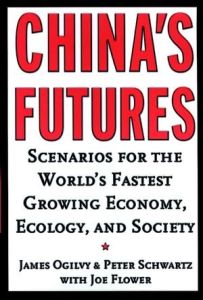Join getAbstract to access the summary!

Join getAbstract to access the summary!
James Ogilvy, Peter Schwartz and Joe Flower
China's Futures
Scenarios for the World's Fastest Growing Economy, Ecology and Society
Jossey-Bass, 2000
What's inside?
Masters of scenario planning describe the possible Chinas that your children will contend with.
Recommendation
Authors James Ogilvy and Peter Schwartz (and writer Joe Flower) supply the usual graphs and projections in this look at China’s possible futures, but they also color their work with brothel madams, mass executions of judges and rock stars, satellites shot down, civil war between factions of the New Chinese Mandarins, an all-out naval assault on Taiwan and China at war with India. These timelines are presented as realistic scenarios of China’s possible evolution over the next 20 years. "Scenario planning" sounds a lot like science fiction, but the authors apply the same kinds of projections that companies use in financial forecasting to the future of China. Novelistic narratives - another hip practice that businesses are using - show each future. They read and sound a lot like science fiction, but are very entertaining and illustrate their scenarios graphically. Is a novelist’s pen at work? getabstract recommends this great read even to random China watchers, and notes that it is must reading for anybody who wants to invest or do business there.
Summary
About the Authors
James Ogilvy and Peter Schwartz are partners in Global Business Network (GBN), a consulting and research firm that is devoted to helping clients develop business strategies that fit the emerging realities of global markets. Joe Flower is a professional writer.


















Comment on this summary